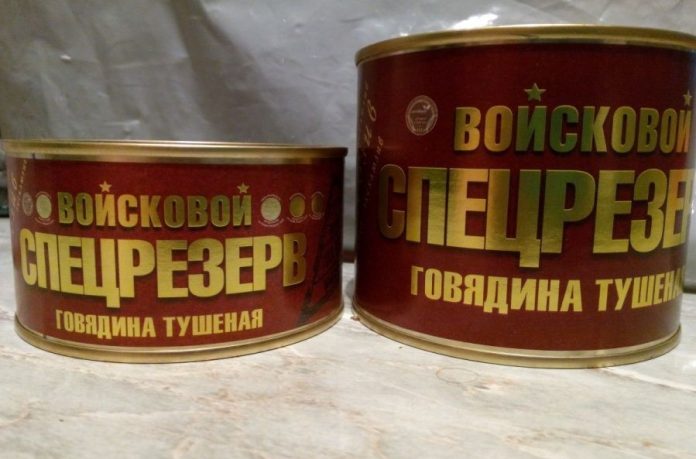
Speaking about the army kitchen, sooner or later, any consideration comes to canned. Without them, all were unreal prolonged nature of military action. expansion of empires, conquest and discovery of new lands ... And so on.
And the further, the more food needed to carry with. Good, when you go to win the familiar neighbor, knowing, where he town and village, where it was possible to plunder. And if the "over the horizon"?
Basically, and herds, which had the Roman legions drove for a, It could be called a living canned. Self-propelled or meat rations. Anyway, War without meat once meant so good. It with meat - not a gift, but no meat at all melancholy and sadness.
The oldest canned food - corned, jerky, Dried and dried fish. Fat. Salted and smoked. The main sources of protein. Because at Kashka, svarennoy of Vodicka, war sucks. It is proved by the Romans. And it must be myastsa, even restored, contemporary language, olives, swede, yes some wine cheese. And you can even hung Carthage, though distant Persia. There would be food and water.
For many centuries, salting and drying (vyalenie) It was the only way to preserve the provisions in the civilized world. And traveled for marching armies of wagons and carriages with dried pork and goat, dried fish, vegetables, flour and other military supplies. Cowards and bulls, harnessed to a wagon. Today, the bull - tractive equipment, Tomorrow ... Tomorrow could be different alignment. Less pleasant for the bull.
Table by the soldiers of the Middle Ages, you know, I was so-so.
That all changed in the 19th century. Emperor Napoleon, after eating plenty of salted and dried "delicacies" during his Egyptian campaign, I attended exactly, that the Long March his army must have had quite a decent diet. And puzzled these subjects.
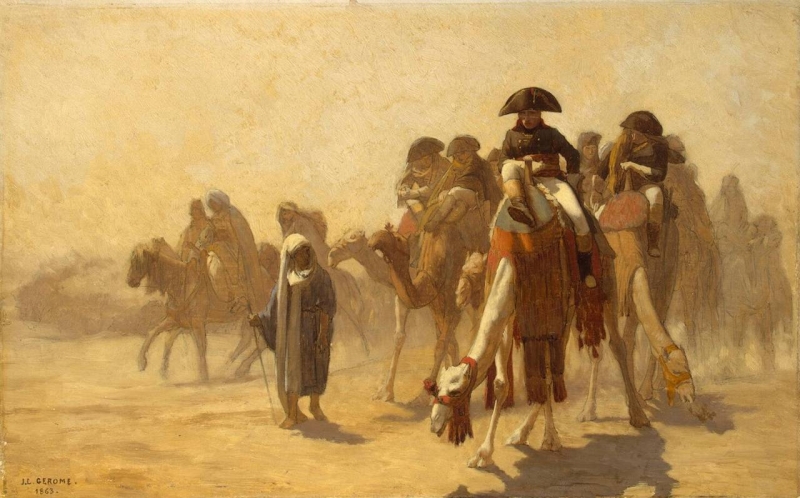
And they went into the history of the names.
first name. Nicolas Appert.
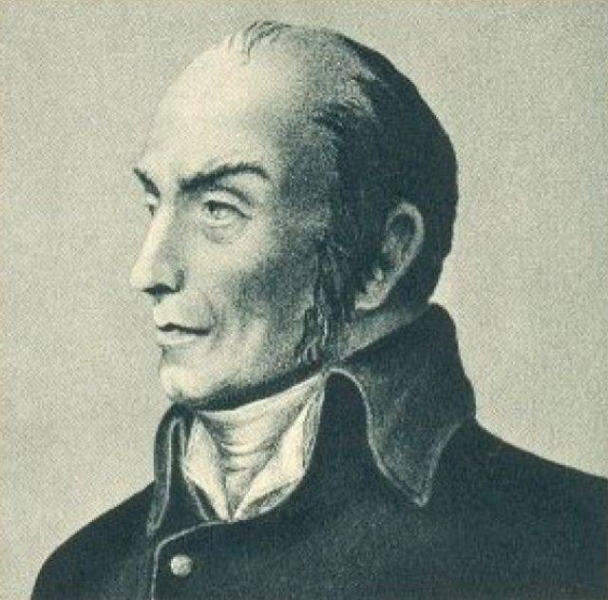
Former pastry chef at the court of one of the small German Dukes, calculated at the ruin of his master, and returned to France, Bonaparte took up the challenge and won.
Yes, Upper originally used glass containers, which it was not very useful in military campaigns, but nonetheless, storage products for quite a long time, it was possible.
way of, Appert invented, not replaced, and will complement the proven ways to store food - drying and salting. Just in France at that time there was no plant capacities for production of canned food in the right volumes. for example, to supply the whole of Napoleon's army. But nonetheless, apperovskie canned become a great help to the officer corps.
And the soldiers could easily get by with the usual corned beef.
AT 1810 by Nicolas Appert for his invention, and received the title of the award - 12 thousand francs from the hands of Napoleon Bonaparte.
But the history of military canned food would not be complete without another name.
Lazzaro Spallantsany.
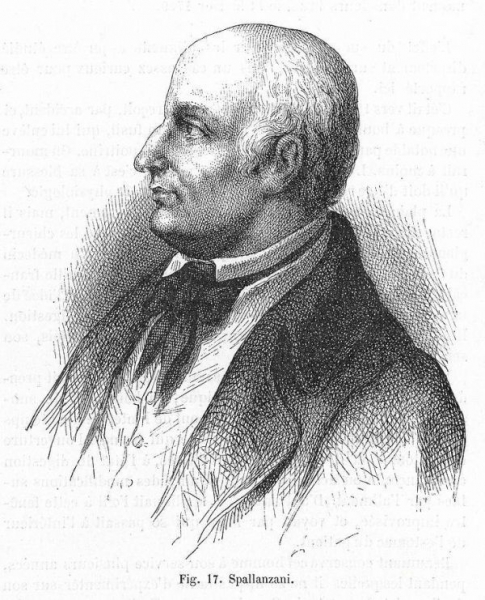
Italian naturalist, physics, zoologist ... Jesuit. As with all the priests of the Company of Jesus, Spallanzani was a very good scholar. Knowing about the ad director of competition, Jesuit, very closely followed the experiments of Appert.
Upper laid products in glass bottles, Banks with a high neck, sealed,, and then subjected to boiling in salted water in order to increase the boiling temperature, And small banks were in the boiling water for half an hour, larger - three to four hours at a temperature slightly above 100 degrees. Avtoklavirovanie, anyway.
Many today say - classic, nothing new. Today, yes, a 200 years ago, it was not just a breakthrough. It is on the verge of discovering the philosopher's stone. But that steeper - the philosopher's stone or stew? I am here for the stew vote. stomach.
so here, Spallantsany, peeping at Upper, also conducted a series of experiments with mutton broth, which he poured into the banks or with the lid, or in banks, that were sealed with fire burner. And also varied boiling time.
Since Jesuit found, in tightly sealed and well warmed banks no "small animals" no. They were only in banks, which were tightly closed and long enough prokipyacheny, and, Most likely, penetrated to the air or kept after boiling, and not originated by themselves.
So Spallanzani in 1797 He was refuted spontaneous conception, and incidentally revealed the existence of tiny organisms, can carry short - for several minutes - boiling. No he did not receive awards, but, on the other hand, and nothing bad had happened Jesuit. The theory of "divine spark" is not swayed. In fact, Spallanzani was the father of the pasteurization process,.
AT 1810 year on their premium Upper published work "The Art of conservation for several years, animal and vegetable substance". Enterprising inventor opened shop in Paris "Various edibles in bottles and boxes", where each buyer entered immediately saw the resulting from Napoleon honorary diploma.
Shop led canned sale, prepared and packaged according to the procedure Appert. Production was carried out in a small factory at the store. However, the special popularity, even in Napoleon's army, Appert canned food is not won. A general consumer price deterred.
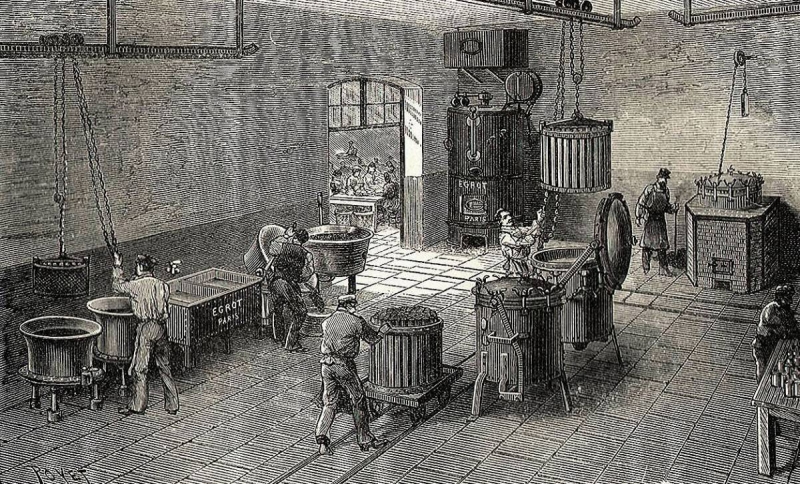
but he struck 1812 year, and everything went ... Not really, of course, as planned, but it was then in Russia and met with the invention Appert. Many cans fell into the hands of Russian soldiers, but say, that the taste is not liked. Hard to tell, someone started a rumor, that the meat in glass bottles - lyagushatina, History does not remember.
According to the legend, first, who decided to taste canned, he became the commander of the Russian army Mikhail Kutuzov, famous glutton. Kutuzov concluded, that banks lamb, but use canned all other banned. Just in case.
It took literally 10 years, And it happened the next evolutionary step of canned. And they did it the British.
Another name. Peter Durand.
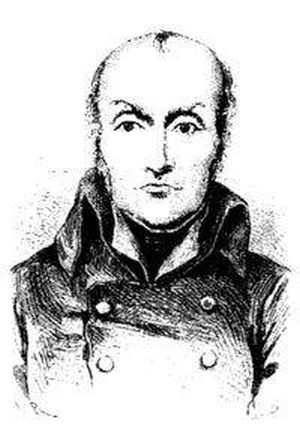
It was he who came up with the idea to replace the fragile glass jars with metal. Durand patented the invention, even in the same 1810 year, when Upper celebrating his success. Sam Durant to implement the invention in the production could not reason about lack of money for it and just sold the patent to meat producers Bryan Donkin and John Hall. Total of one thousand pounds sterling.
Thus began the history of tin with canned food, which Donkin and Hall factories produced for the needs of the British army and navy.
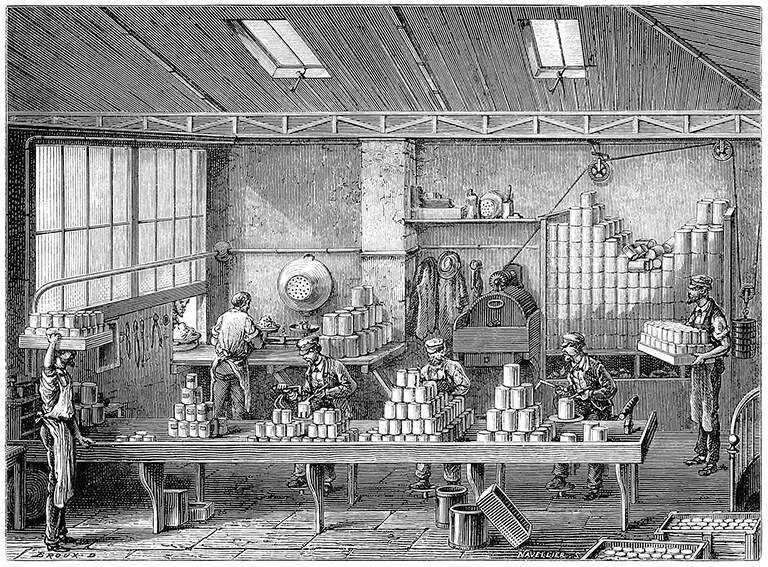
We are all aware, how in those days the British were harsh steep. Durand cans made of forged manually tinned iron sheet. body seam tin manually payalsya, on the inner side of banks. The bottom is soldered to the housing, and the cover in the last turn, after, in bank pawned solid content. Meat or porridge with him.
If the jar should pour any liquid such as soup, the Bank fully brazing, but it leaves a hole in the lid, was charged through which the liquid contents, after which the hole is sealed.
The lightest weighed at least a pound bank, that is about 450 grams. And there was quite expensive. Handmade Still. A skilled mechanic in a factory produced not more than five cans per hour.
But the "trick" is that, that the most diabolical nuance was that, that in order, to open a bank, I needed a tool kit. A hammer, chisel or ax and force.
There were reported cases of death from hunger sailors shipwreck victims, who had boats in stock canned, but it was not that, than you would uncover such cans.
History has left us a lot of orders on disciplinary sanctions for British soldiers during the Crimean War. Soldiers broke their bayonets simply frightening quantities, in an attempt to open canned food. Command issued an order, prohibiting the use bayonets for this purpose, but orders the problem not solved. Banks continued to outperform the bayonets and knives.
Soon canned reputation was badly marred. solder, which payalis banks, It consisted of tin and lead. Lead, need to say, not the most useful for the organism metal. The presence of lead in the solder guaranteeing a slow poisoning of the human body.
Lead has been recognized as one of the causes of death of the crew of the British Arctic Expedition John Franklin, it has not added to the popularity of canned food.
Next name. Henry Bessemer.
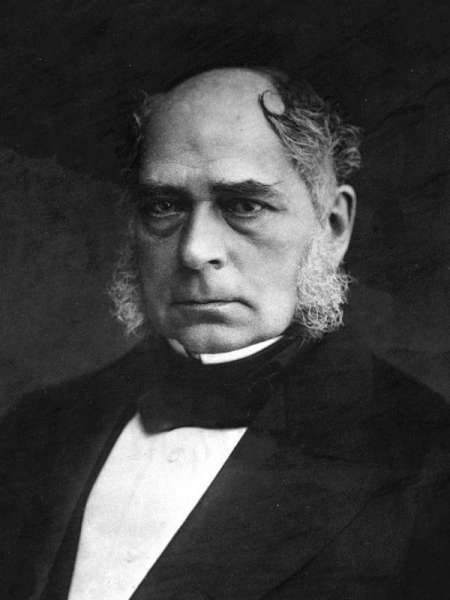
Was born in 1813 year, later canned, but it has made a huge contribution to this business. At all, Bessemer invented many useful things, more 100 patents, but we are interested in one of his invention, namely - Bessemer.
AT 1856 Bessemer was filed a patent on a converter for smelting molten iron into steel by blowing air without fuel consumption, which became the basis of the Bessemer process.
briefly, the Henry Bessemer invented a way of obtaining a gravity outlet - thin and lightweight steel.
The appearance of tin solder allowed to refuse when banks manufacture, applying a seaming. Gradually cans acquired a modern look. Furthermore, it became possible to them without opening the ax, bit or bayonet. Cans at all possible was to open even without a can opener!
To top 20 century canning factory is divided into two areas. One was intended to meet the needs of the army and sent to the distant edge of the expeditions, the second was aimed at preserving the flavor of a variety of delicacies.
In the Russian Empire, the first canning factory was opened only in 1870 year, in St. Petersburg. factory owner Francois Frantsievich Aziber, French entrepreneur, carried by canning method Appert.
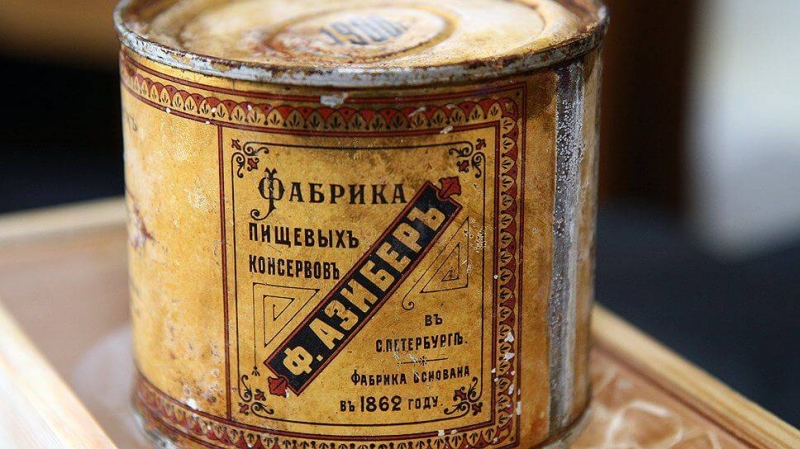
Naturally, the main consumer of canned food was the imperial army. For the army issued:
- roast beef;
- roast lamb;
- vegetable stew with meat;
- porridge with meat;
- meat with peas;
- horohovaya pohlёbka.
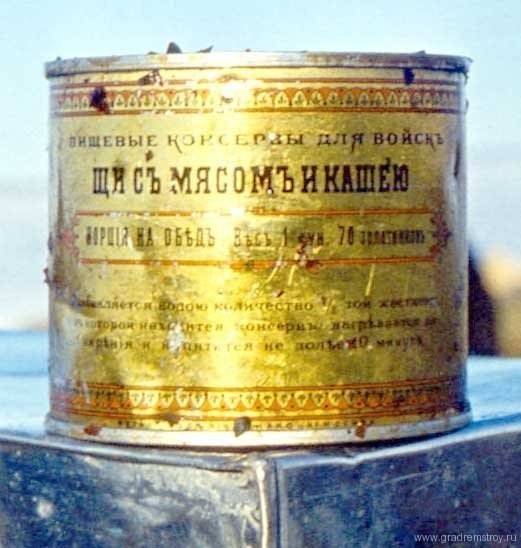
The main advantage of such cans was a long-term storage at a high caloric content. It is worth noting, that for the production of canned food used the best and not cheap ingredients.
AT 1904-1905 gg. on private canning factories Petersburg, borisoglebsk, Odessa, Riga and Mitau, working at the Defense Ministry, It was issued to 250 000 cans per day. In the year - almost 70 million cans.
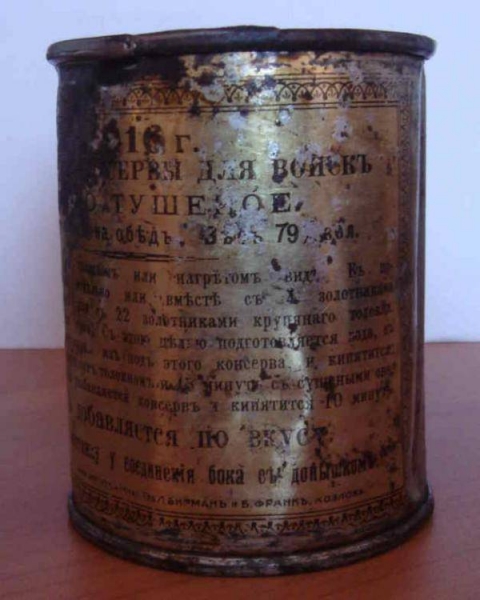
So if somewhere behind Russia, that in those days it was normal, the catch / catch up and overtake, we also were able to.
The last name on the list of our fathers canning business is Russian.
Fedorov Eugene S..
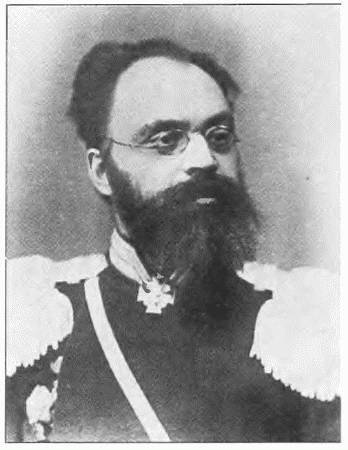
military engineer, inventor, Lecturer Nicholas Engineering School and Officer aeronautic school in St. Petersburg.
Eugene S. invented a lot of things, but we are interested in its self-heating tin. She came up with her talented engineer 1897 year.
The essence of his invention was a very simple and cheap to manufacture. Bank Fedorov had a double bottom, which were sealed container, filled with calcium oxide, and water. When you rotate the bottom of the tank with lime destroyed, water and lime reacts, and thus the bank's heated.
Generally, carbide into the water as a child, almost all throwing.
Yevgeny Fyodorov died very early, at 1909 year. As a huge number of Russian scientists, patents and the protection of their copyrights do not bother. And this turned out to be a positive thing. As soon as the First World War, Several manufacturers without problems started producing samopodogrevayuscheysya stew.
Beginning with 1915 Year party self-heating canned Fedorov banks began to come to the front. Preserved much evidence that, Fedorova that banks are often the only way for men to get a hot meal.
Gen., and then still esaul, Şkuro, popivshy a lot of blood from the Turks in raids in the rear on the Caucasian front, in his memoirs he recalled with gratitude the self-heated stew, which it was very convenient to use in the Turkish rear, without fear of unmasking.
Of course, after the Revolution and the Civil War canned edition was discontinued almost completely. And samopodogrevayuschihsya, and conventional. Not until it was conservatories.
Nevertheless, Eugene Stepanovich Fedorov idea is still alive. There are many manufacturers, which produce products in cans, using his invention. change agents, but the essence remains the same.
That's how we have gone from glass jars / bottles with lamb Mr. Bonaparte to quite modern cans 20 century. long path, but useful. Canned meat became really ruler unless battlefields, the lull in the war precisely minutes.
But we will continue to talk about the difficulties and vicissitudes of Russian military kitchens in the next article. It will focus on post-Petrine times.











